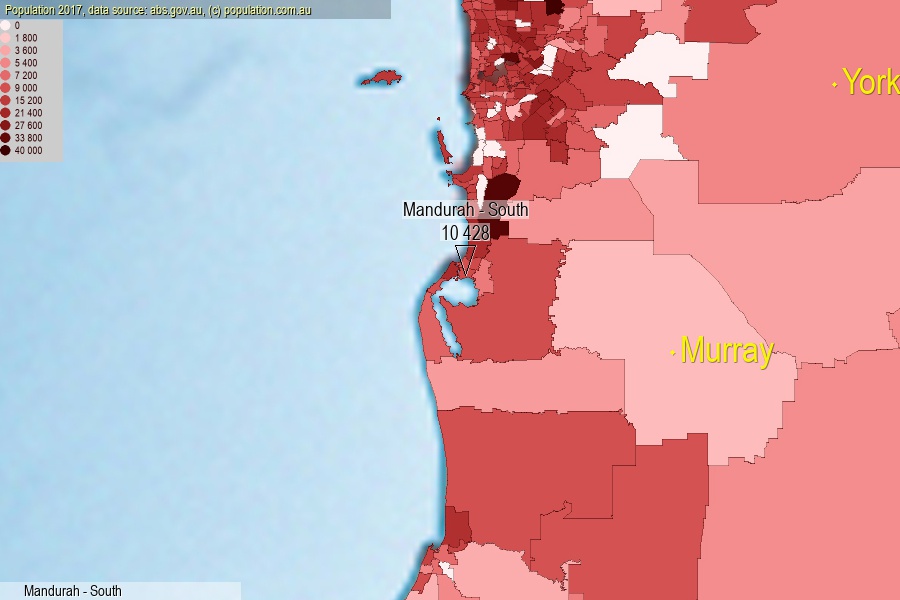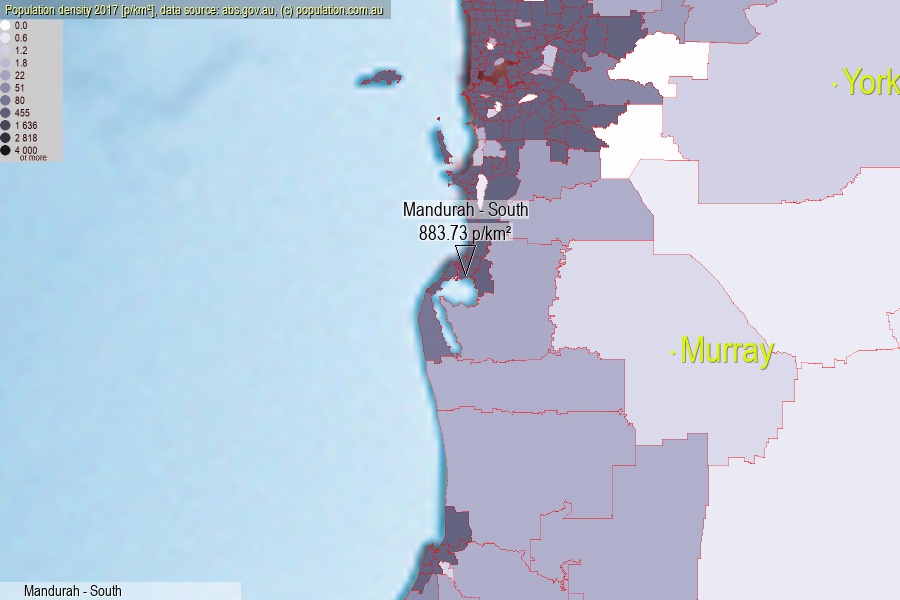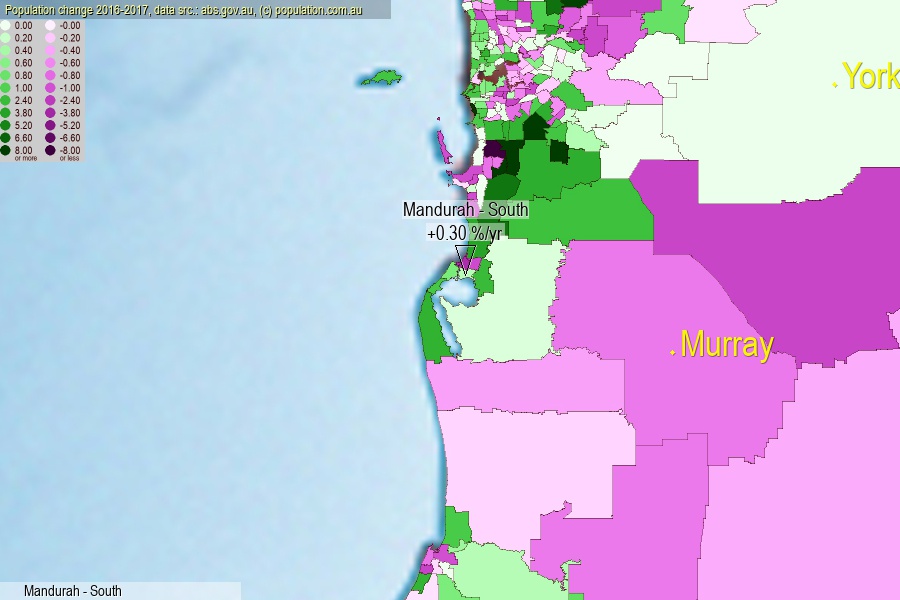 population.com.au
population.com.auLast official estimated population of Mandurah - South (as Statistical Area Level 2) was 10 428 people (on 2017-06-30)[2]. This was 0.04% of total Australian population and 0.402% of WA population. Area of Mandurah - South is 11.80 km², in this year population density was 883.73 p/km² . If population growth rate would be same as in period 2016-2017 (+0.3%/yr), Mandurah - South population in 2025 would be 10 679. [0]



Click to enlarge. Mandurah - South is located in the center of the images.
Population [people], population density [p./km²] and population change [%/year] [2]
View borders » (new window) [4]
[1991-1992] +4.19 %/Yr.
[1992-1993] +2.95 %/Yr.
[1993-1994] +4.54 %/Yr.
[1994-1995] +6.90 %/Yr.
[1995-1996] +3.77 %/Yr.
[1996-1997] +5.17 %/Yr.
[1997-1998] +3.57 %/Yr.
[1998-1999] -2.70 %/Yr.
[1999-2000] +2.61 %/Yr.
[2000-2001] +2.26 %/Yr.
[2001-2002] -0.68 %/Yr.
[2002-2003] +1.85 %/Yr.
[2003-2004] +5.51 %/Yr.
[2004-2005] +2.86 %/Yr.
[2005-2006] +2.65 %/Yr.
[2006-2007] +2.11 %/Yr.
[2007-2008] +4.76 %/Yr.
[2008-2009] +1.86 %/Yr.
[2009-2010] +1.62 %/Yr.
[2010-2011] +3.70 %/Yr.
[2011-2012] +3.26 %/Yr.
[2012-2013] +2.85 %/Yr.
[2013-2014] +0.22 %/Yr.
[2014-2015] +0.32 %/Yr.
[2015-2016] +0.03 %/Yr.
[2016-2017] +0.30 %/Yr.
[0] Calculated with linear interpolation from officially estimated population
[1] Read more about SA2 and Australian Statistical Geography Standard (ASGS) on abs.gov.au
[2] Population data from Australian Bureau of Statistics (Population and density: 2017; change: 2016-2017)
[3] Digital Boundaries: Australian Statistical Geography Standard (ASGS) 2016.
[4] Border coordinates are simplifyed using Ramer-Douglas-Peucker algorithm.